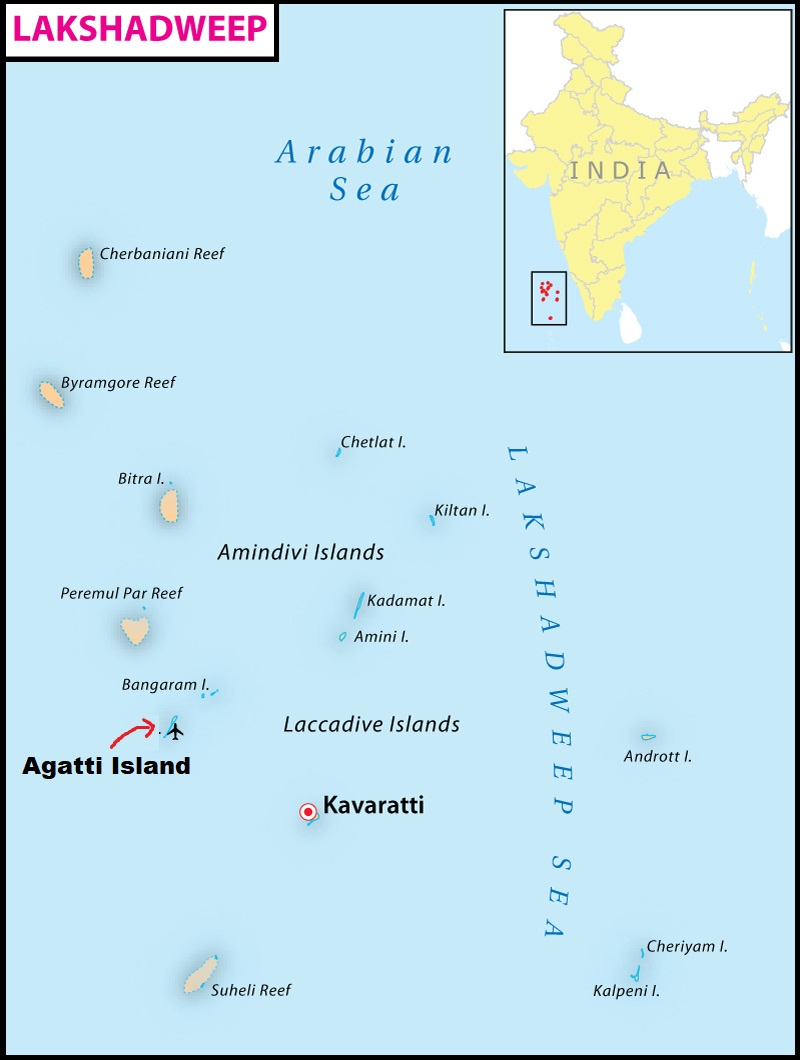From UPSC perspective, the following things are important :
Prelims level: Global Coral Bleaching Events (GCBE), Lakshadweep, Corals

Why in the News?
Lakshadweep has been severely affected by the fourth global coral bleaching event (GCBE4), the most severe on record according to the National Oceanic and Atmospheric Administration (NOAA).
Global Coral Bleaching Events (GCBE)A GCBE means significant coral bleaching has been confirmed in all the ocean regions where warm-water corals live: the Pacific, Atlantic, and Indian Oceans in both the Northern and Southern Hemispheres.
|
Lakshadweep Specifics
- Kavaratti atoll survey indicated an 84.6% bleaching extent, with mass bleaching observed. Previous bleaching events in Lakshadweep were 81% (1998), 65% (2010), and 41.9% (2020).
- Species Impacted:
- Most impacted: Porites cylindrical, Porites lobata, Porites lutea, Acropora muricata, Montipora foliosa.
- Resilient species also showing signs: Acropora digitifera, Pocillopora grandis, Isopora palifera, Pavona venosa, Hydnophora microconos.
- Contributing Factors: Increased temperatures attributed to global warming; from April 1 to May 2, 2024, temperatures ranged between 29.6°C to 32.8°C.
Importance of Coral Reefs
- Marine Biodiversity: Support diverse marine life including fish, invertebrates, and algae.
- Coastal Protection: Act as natural barriers against erosion and storm surges.
- Local Economy: Provide sustenance and livelihood for local communities and attract tourists.
GCBE-4 and Indian Context
- Gujarat Coast: Monitoring coral bleaching mid-summer, with 30-40% bleaching observed annually; most corals recover.
- Tamil Nadu: Lesser impact in the Gulf of Mannar due to late bleaching onset and early monsoon reducing seawater temperatures.
- Temperature Reduction: The onset of monsoon has slightly reduced water temperatures in Lakshadweep.
- Recovery Uncertain: The long-term health of corals depends on sustained cooler conditions and the absence of further stressors.
Back2Basics: Corals
Types of CoralCorals are of two types — hard corals and soft corals:
Conditions Needed for Corals to Flourish
|
PYQ:2014: Which of the following have coral reefs?
Select the correct answer using the code given below: (a) 1, 2 and 3 only (b) 2 and 4 only (c) 1 and 3 only (d) 1, 2, 3 and 4 |
Get an IAS/IPS ranker as your 1: 1 personal mentor for UPSC 2024
